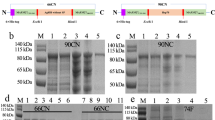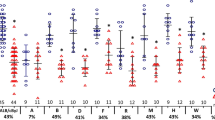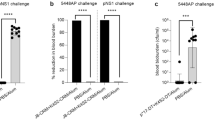Abstract
THE growing recognition that the immunological responses initiated by certain micro-organisms are not necessarily limited in their scope, but may be manifested towards taxonomically and antigenically heterologous organisms1, raises the question of whether many states of specifically acquired immunity rest entirely on specific mechanisms. The increased resistance which accrues to survivors of a first infection, or which follows a specific immunization procedure, may not always be based on specific immunological reactions, that is, those involving antibody or tissue hypersensitivity, but may result from the same non-specific effects which underlie the development of heterologously orientated changes in immunity.
This is a preview of subscription content, access via your institution
Access options
Subscribe to this journal
Receive 51 print issues and online access
$199.00 per year
only $3.90 per issue
Buy this article
- Purchase on Springer Link
- Instant access to full article PDF
Prices may be subject to local taxes which are calculated during checkout
Similar content being viewed by others
References
Shilo, M., “Ann. Rev. Microbiol.”, 13, 255 (1959).
Dubos, R. J., and Schaedler, R. W., J. Exp. Med., 106, 703 (1957).
Schaedler, R. W., and Dubos, R. J., J. Exp. Med., 106, 719 (1957).
Weiss, D. W., and Wells, A. Q., Amer. Rev. Tuberc. (in the press).
Weiss, D. W., and Wells, A. Q., Amer. Rev. Tuberc. (in the press).
It has been reported previously that tuberculous and leprous diseases confer resistance on man and on laboratory animals against plague infection ( Girard, G., and Grumbach, F., C.R. Soc. Biol., Paris, 152, 280 (1958); Rep. Internat. Plague Conf., Mukden, 1911).
The EV 76 strain of P. pestus is relatively a virulent ( Walker, D. L., et al., J. Immunol., 70, 245 (1953)), but kills mice when given in large numbers.
Author information
Authors and Affiliations
Rights and permissions
About this article
Cite this article
WEISS, D. Enhanced Resistance of Mice to Infection with Pasteurella pestis following Vaccination with Fractions of Phenolkilled Tubercle Bacilli. Nature 186, 1060–1061 (1960). https://doi.org/10.1038/1861060a0
Issue Date:
DOI: https://doi.org/10.1038/1861060a0
This article is cited by
-
Mechanism of Immunity Against Brucella
Nature (1965)
Comments
By submitting a comment you agree to abide by our Terms and Community Guidelines. If you find something abusive or that does not comply with our terms or guidelines please flag it as inappropriate.



